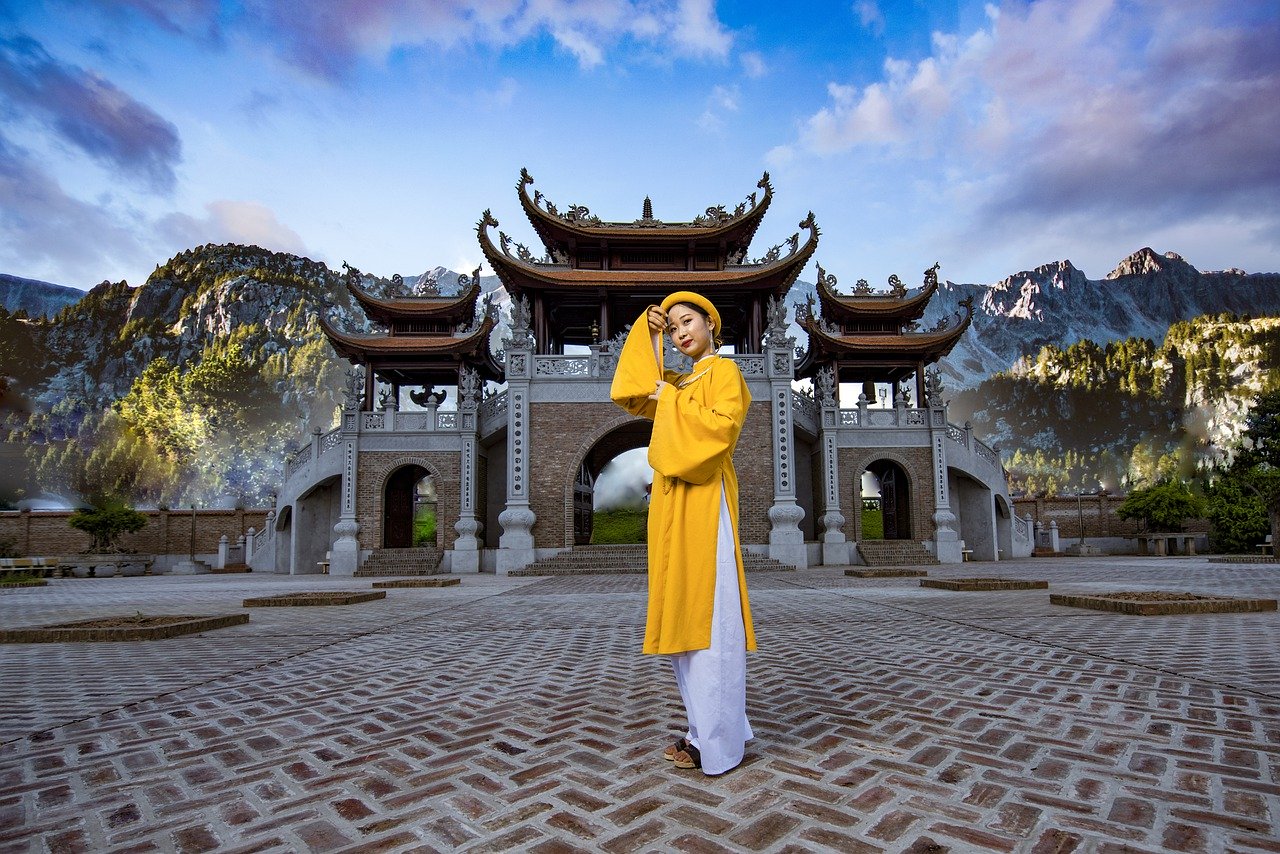Vietnam is a country that captivates the senses and the imagination of travelers with its unique blend of vibrant culture, rich historical tapestry, and breathtaking natural landscapes. The nation’s appeal lies in its ability to offer a truly diverse range of experiences within its borders. From the chaos and charm of its bustling cities like Ho Chi Minh City and Hanoi, where the scent of street food and the sound of motorbikes fill the air, to the serenity of the terraced rice paddies in regions such as Sapa, Vietnam is a land of contrasts.
History enthusiasts are drawn to Vietnam’s storied past, evident in the ancient temples and pagodas that dot the landscape, the historic Old Quarter of Hanoi, and the imperial city of Hue. Each of these sites offers a window into the past, from the days of the ancient Champa Kingdom to the more recent legacies of the Vietnam War.

Vietnam’s culture is as rich as its history, with a tapestry woven from the traditions of its 54 ethnic groups. This diversity is celebrated through colorful festivals, folk music, and a cuisine that is fast becoming one of the world’s most popular, known for its flavorsome balance of sweet, sour, and spicy.
The country’s natural landscapes also contribute to its appeal, with options ranging from the limestone karsts of Ha Long Bay, which create a seascape of mythical beauty, to the pristine beaches of Phu Quoc Island. Nature lovers are also drawn to the biodiversity of places like the Mekong Delta and the national parks, which are home to exotic wildlife and offer opportunities for trekking, cycling, and river cruises.
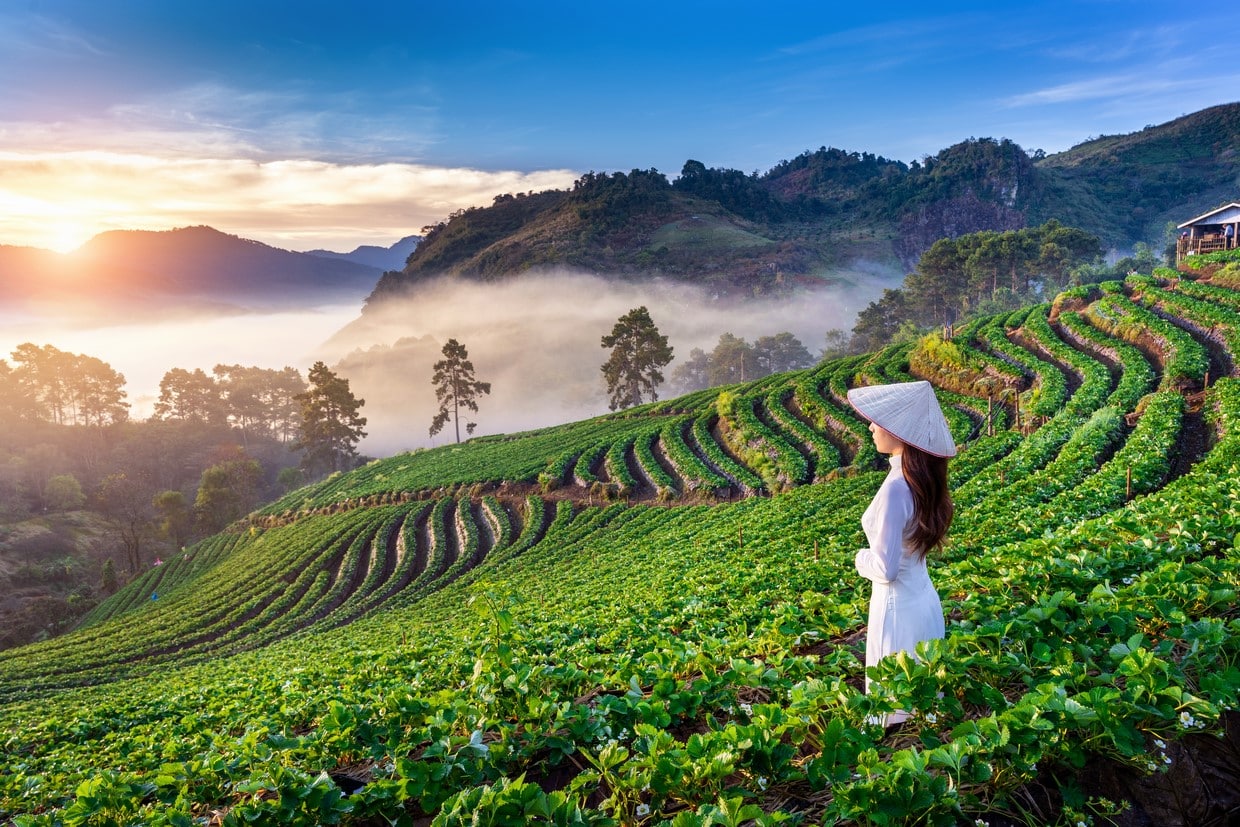
Vietnam, therefore, offers a travel experience that is as complex as it is complete, where the ancient and modern coexist and the landscapes provide a stunning backdrop to a nation that is at once both deeply traditional and rapidly developing.
Vietnam’s cultural heritage is as rich and complex as the tapestry of its history, with numerous sites acknowledged by UNESCO for their historical and cultural significance. Travelers can explore the Imperial Citadel of Thang Long in Hanoi, an intriguing archaeological site that gives insights into Vietnam’s thousand-year history as the seat of former Vietnamese empires. The citadel’s layers symbolize the confluence of indigenous and outside influences, particularly that of China to the north.
Further central to Vietnam’s historical narrative is the Complex of Huế Monuments. This former imperial capital is a sprawling complex of royal palaces, shrines, and tombs, set along the picturesque Perfume River. The elaborately designed mausoleums and ruins of the Forbidden Purple City are a testament to the Nguyen Dynasty’s power and artistry.
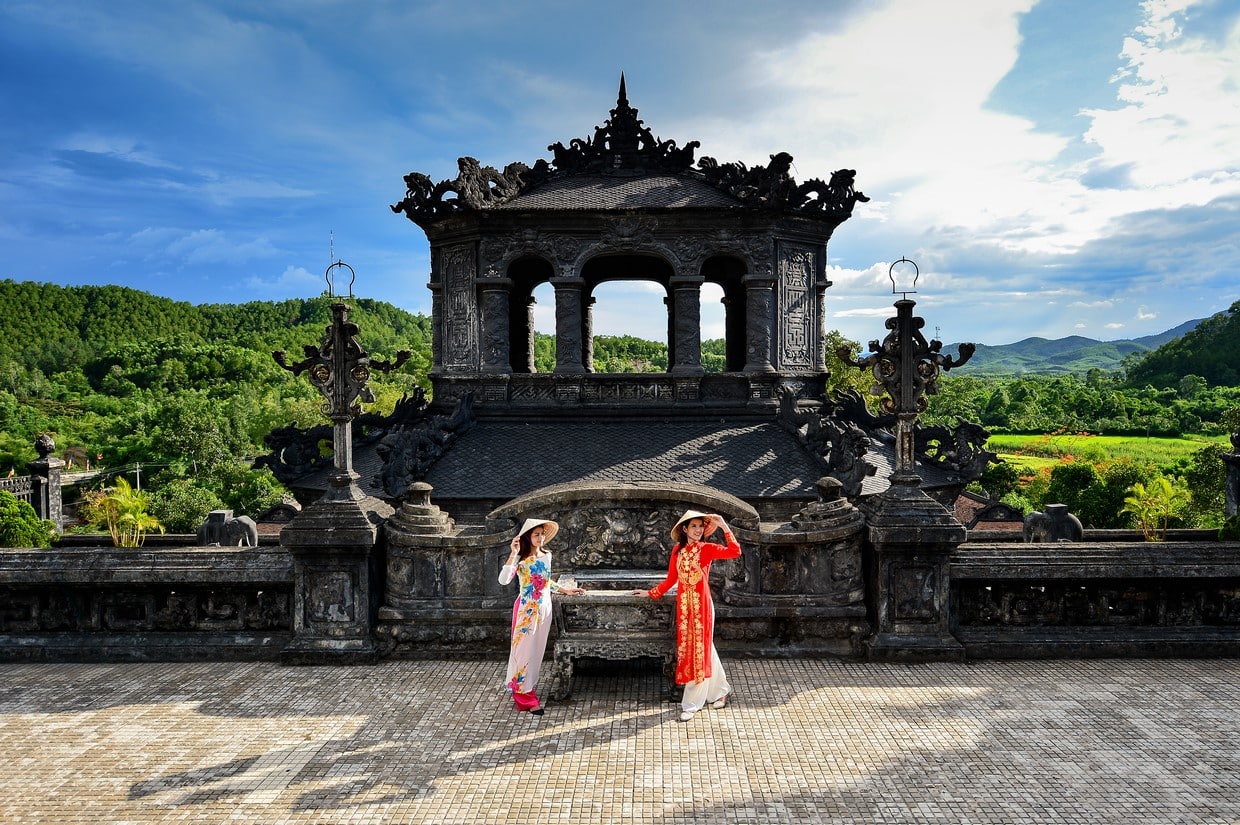
Another UNESCO gem is the ancient town of Hội An, a well-preserved example of a Southeast Asian trading port dating from the 15th to the 19th century. Its buildings and street plan reflect both indigenous and foreign influences, offering a snapshot of a bygone era of commerce and culture. The town is particularly known for its vibrant lantern festivals, which transform the area into a dazzling spectacle of light and color.
For a living experience of Vietnam’s cultural heritage, travelers can immerse themselves in traditional festivals such as Tet Nguyen Dan (Vietnamese New Year), or the Mid-Autumn Festival, where locals partake in age-old customs and culinary delights. Traditional arts are also a window into the local culture, with water puppetry performances—a unique Vietnamese art form—and the melodic tunes of traditional instruments like the monochord or the “đàn bầu” enchanting visitors.
Beyond festivals and performances, cultural experiences in Vietnam also include craft villages, such as Bat Trang pottery village near Hanoi, where visitors can observe the process of making fine ceramics and even try their hand at the potter’s wheel. These cultural practices are not just for show; they are woven into the daily lives of the Vietnamese people, offering a genuine glimpse into the soul of this vibrant country.
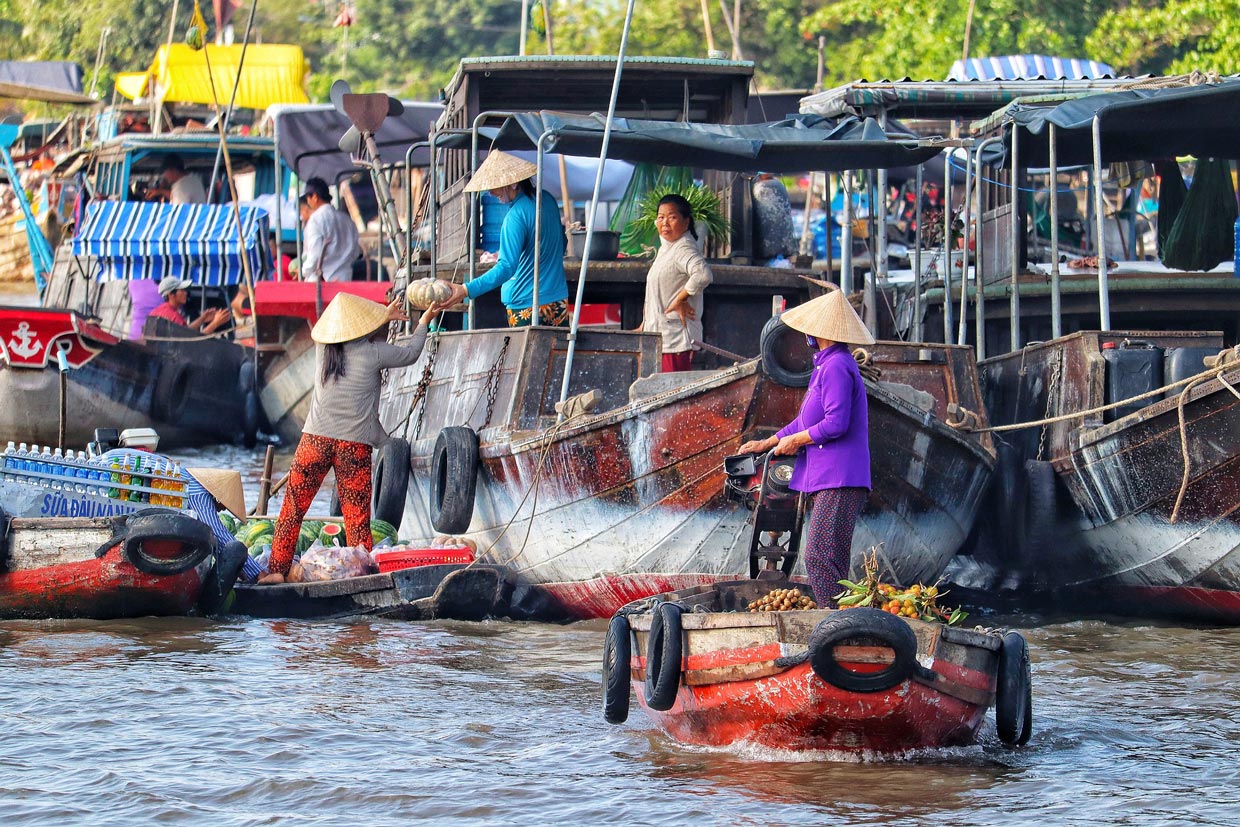
Vietnamese cuisine is a delectable journey through flavors and techniques that reflect the country’s regional diversity and cultural influences. It is characterized by its use of fresh herbs, a balance between sweet and savory, and a lightness that makes it both flavorful and healthy.
Vietnamese Food, From north to the south
In the north, Hanoi is famous for its “phở,” a noodle soup often served with beef (phở bò) or chicken (phở gà), which is a perfect representation of Vietnamese culinary simplicity and elegance. The northern palate tends to favor the subtle flavors, reflecting the cooler climate and less aggressive spices compared to the southern region.
Moving to central Vietnam, the food becomes more vibrant and colorful, much like its history. The city of Hue, once the imperial capital, offers dishes such as “bún bò Huế” – a spicy beef noodle soup known for its distinctive flavor and lemongrass aroma. “Bánh bèo” (steamed rice cakes topped with shrimp) and “bánh khoái” (a crispy pancake filled with shrimp, pork, and bean sprouts) are also not to be missed, showcasing the region’s preference for intricate dishes with strong, bold flavors.
In the south, the cuisine reflects the abundance of spices and herbs, with dishes often featuring a sweeter taste. Ho Chi Minh City is a food-lover’s paradise, offering the likes of “bánh xèo” (sizzling pancakes), and “cơm tấm” (broken rice with grilled pork). The Mekong Delta brings forth a bounty of fresh produce, which is showcased in the region’s specialty, “cá kho tộ” (caramelized fish in a clay pot).

Street Food in Vietnam
Street food is an integral part of Vietnam’s culinary scene, with local markets and roadside stalls offering an array of snacks and dishes. “Gỏi cuốn” (fresh spring rolls) and “chả giò” (fried spring rolls) are perfect for on-the-go eating. For the adventurous foodie, sampling “bún đậu mắm tôm” (noodles with tofu and fermented shrimp paste) is a must-try experience.
Food Tours and Cooking Classes
Food tours and cooking classes are widely available for those who wish to delve deeper into the culinary culture. A visit to a local “wet market” can be an eye-opening experience, where the fresh ingredients that are the cornerstone of Vietnamese cuisine are on vibrant display. Cooking classes often start with these market visits, followed by hands-on instruction on how to create some of the country’s most beloved dishes, providing travelers with not just a meal, but a memorable and educational cultural experience.
Vietnam’s natural landscapes offer a symphony of stunning vistas, ranging from dramatic mountain ranges and lush rice terraces to idyllic beaches and dense forests. The country’s elongated shape blesses it with a variety of ecosystems and geographical features that are as diverse as they are beautiful.
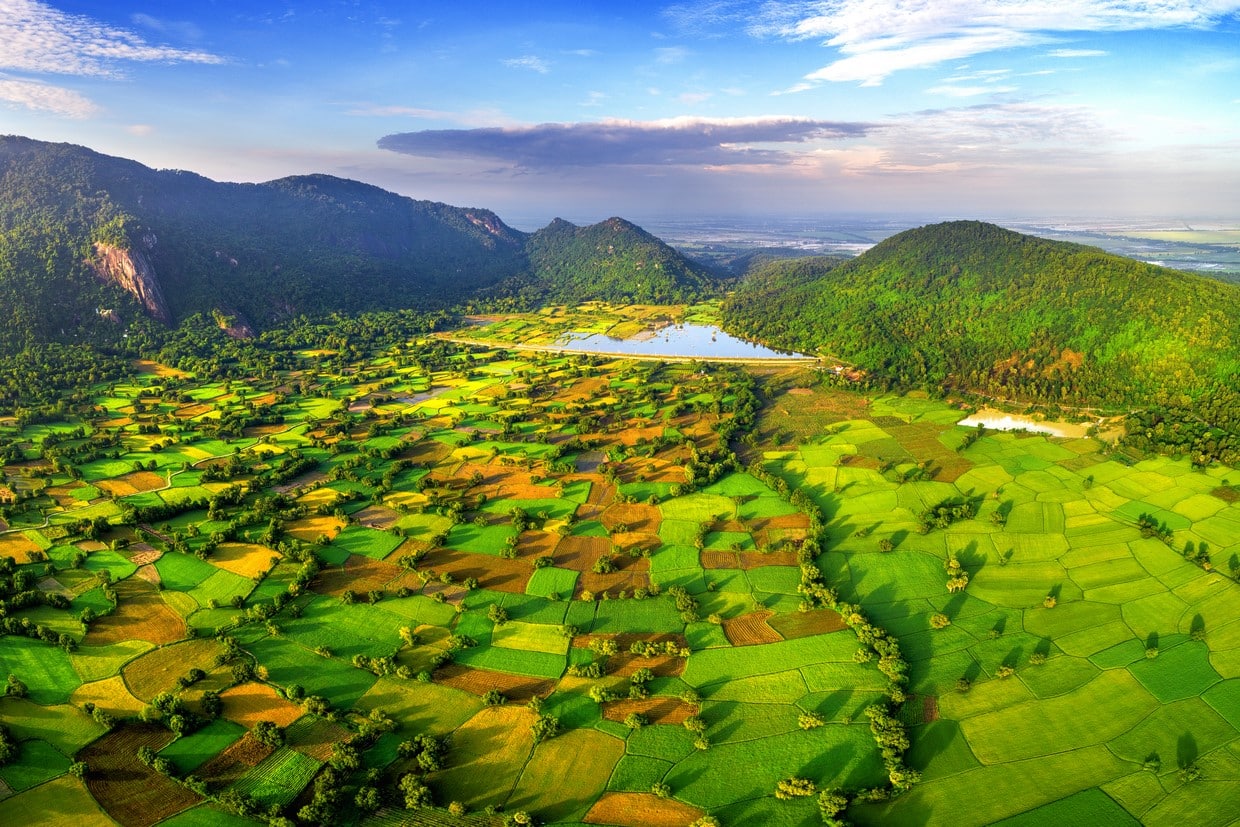
In the north, the mountainous region of Sapa is renowned for its terraced rice fields that cascade down the slopes of the Hoàng Liên Son range. This highland area is also home to Fansipan, the highest peak in Indochina, often dubbed the “Roof of Indochina.” Sapa is not only a place of natural beauty but also a cultural crossroads, where travelers can encounter the traditions of the ethnic minorities that inhabit these highlands, such as the Hmong and Dao people.
Moving eastward from the mountains, the serene beauty of Ha Long Bay is a jewel in Vietnam’s crown of natural wonders. This UNESCO World Heritage site is a collection of over 1,600 limestone islands and islets rising from the emerald waters of the Gulf of Tonkin. Cruising on a traditional junk boat through this maze of karst formations provides a peaceful escape and an opportunity to witness local life, as many islands are inhabited and feature fishing communities.
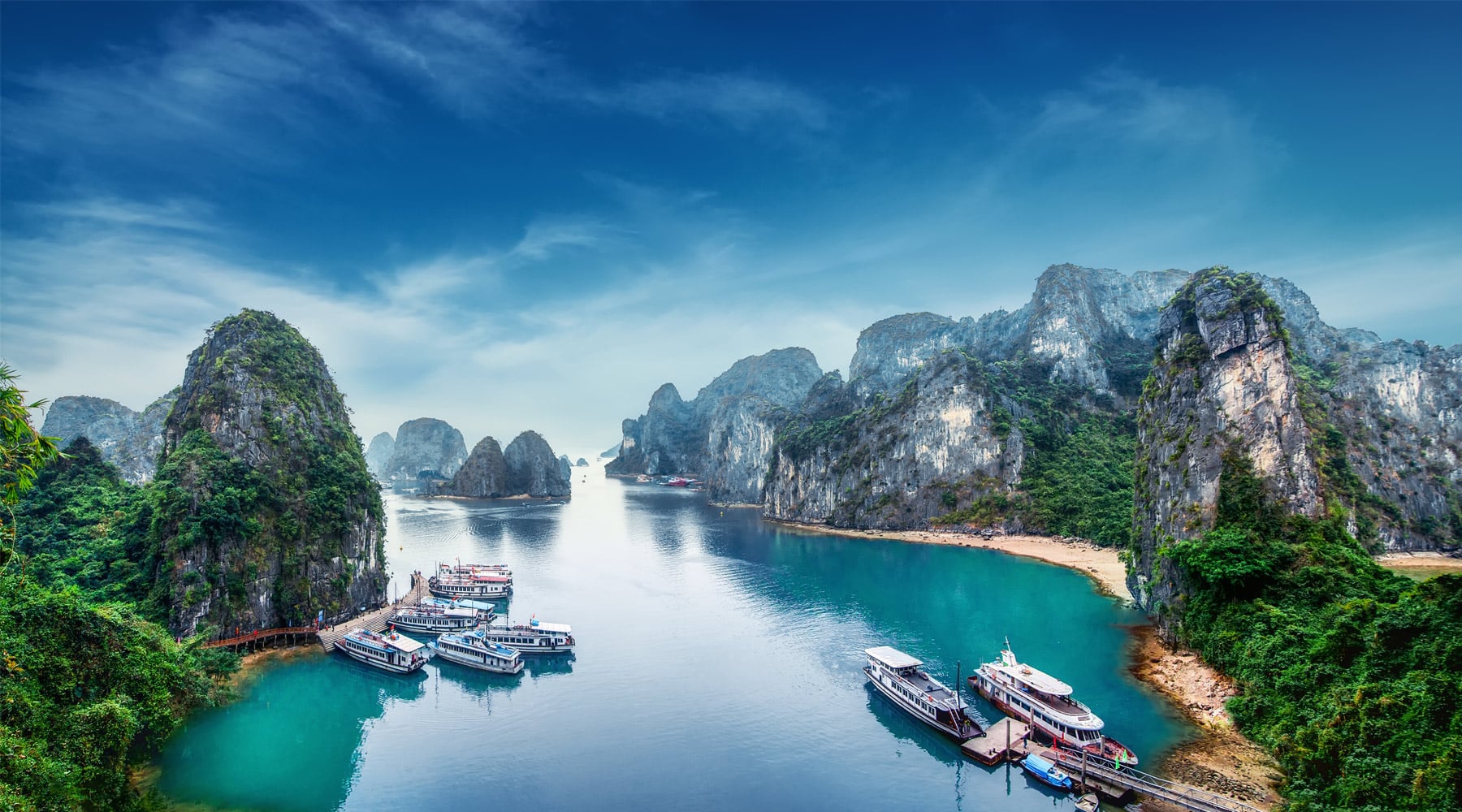
Central Vietnam offers a different kind of spectacle with the Phong Nha-Ke Bang National Park, where one of the world’s largest caves, Son Doong, is located. The park’s karst landscape is over 400 million years old, making it one of the most significant carboniferous sites on the planet. The caves, underground rivers, and deep jungle within the park create an otherworldly setting fit for explorations and adventure.
To the south, the beaches of Nha Trang, Da Nang, and Phu Quoc Island showcase the country’s coastal allure. Nha Trang is famed for its sweeping crescent beach and offers some of the best scuba diving in the country. Da Nang’s coastline is rapidly developing, blending modernity with natural beauty, while Phu Quoc Island, with its white sandy beaches and crystal-clear waters, is a tropical paradise for relaxation and water activities.
No mention of Vietnam’s natural wonders would be complete without the Mekong Delta. Known as the “Rice Bowl” of Vietnam, this fertile region is a watery landscape of green fields and sleepy villages. The Mekong River threads through the delta, nourishing the land and supporting a way of life that is uniquely tied to the rhythm of the waters. Travelers can take a boat trip to experience the floating markets, visit local orchards, and discover the slow-paced, riverine life.
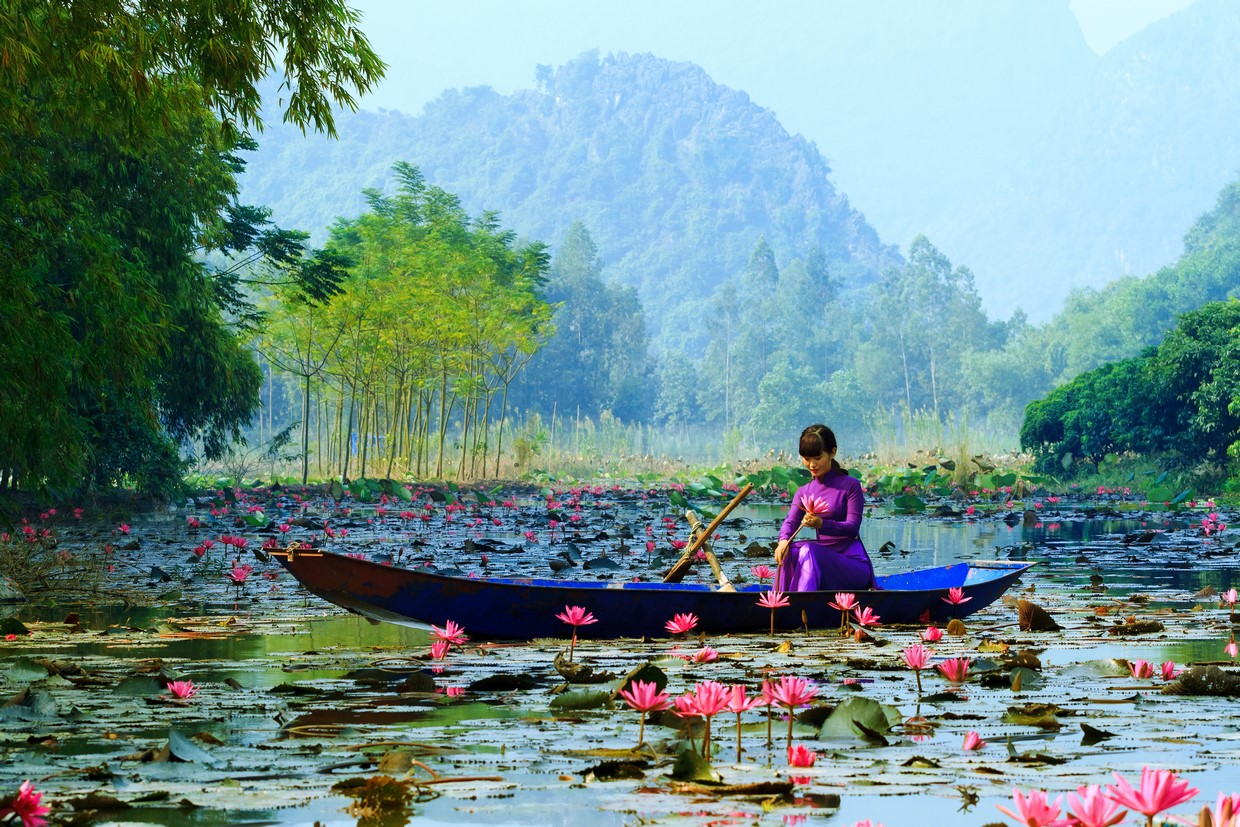
These natural wonders of Vietnam not only offer a visual feast but also provide habitats for diverse flora and fauna, as well as outdoor activities like trekking, kayaking, and cycling, making Vietnam a destination that truly celebrates the natural world.
Vietnam is rapidly becoming a hotspot for adventure tourism, offering a plethora of activities for those seeking an adrenaline rush amidst spectacular natural settings. Trekking is one of the most popular adventure activities, with the mountainous regions of the north, such as Sapa, Ha Giang, and Cao Bang, providing challenging terrains and rewarding views of terraced rice paddies, traditional villages, and towering peaks. These areas are also home to a variety of trekking routes ranging from easy walks to strenuous multi-day hikes.
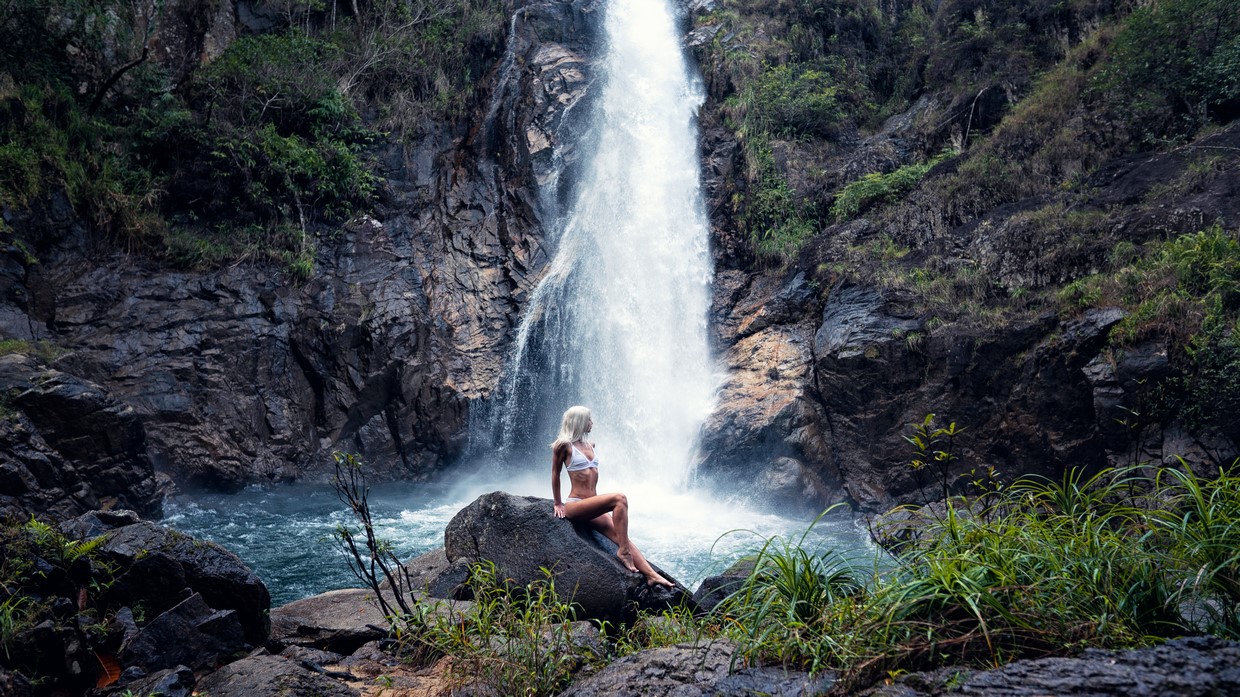
Caving is another adventure activity that has put Vietnam on the map, particularly with the discovery of Son Doong Cave in Phong Nha-Ke Bang National Park. It is the largest cave in the world and offers an unparalleled caving expedition. Other caves in the area, such as Hang En and Paradise Cave, provide opportunities for adventurous spelunking and exploration of the underground rivers and stalactite-studded chambers.
For water sports enthusiasts, Vietnam’s extensive coastline and river systems are ideal for activities like kayaking, windsurfing, and kitesurfing. Ha Long Bay is perfect for sea kayaking, where paddlers can navigate the calm waters and explore the bay’s numerous limestone caves and inlets. The beaches of Mui Ne are known for their strong winds, making them excellent for kitesurfing and windsurfing.
Vietnam’s major cities, Hanoi and Ho Chi Minh City are bustling metropolises that offer a dizzying array of experiences that showcase the blend of old and new in urban Vietnamese life. Hanoi, the capital, is known for its centuries-old architecture and a rich history encompassing Southeast Asian, Chinese, and French influences. The heart of the city is the chaotic Old Quarter, where narrow streets are lined with shops, street food stalls, and cafes. Cultural sites like the Ho Chi Minh Mausoleum, the Imperial Citadel of Thang Long, and the Temple of Literature give visitors a taste of the city’s historical depth.
In contrast, Ho Chi Minh City (formerly Saigon) in the south is Vietnam’s commercial hub, with a more modern skyline and a dynamic atmosphere. District 1 is the center of the action, with landmarks such as the Notre Dame Cathedral Basilica of Saigon and the historic Central Post Office. The city also has a vibrant nightlife, with rooftop bars offering panoramic views and a burgeoning craft beer scene. For history buffs, the War Remnants Museum and the Cu Chi Tunnels provide sobering insights into the country’s turbulent past.
Both cities are culinary powerhouses, offering everything from traditional Vietnamese dishes in local markets to high-end international cuisine. The blend of old and new is also evident in the shopping experiences, from the traditional markets and artisan shops to the sleek malls and designer boutiques. The urban experience in Vietnam is a dynamic journey through time, where tradition and modernity coexist and create a lively and compelling urban tapestry.
Vietnam’s spa and wellness culture embodies a deep sense of tranquility and healing that draws from both traditional practices and modern techniques. Across the country, numerous spas and wellness centers offer a range of treatments such as massages, reflexology, aromatherapy, and herbal baths. Many of these treatments incorporate local ingredients like Vietnamese coffee, coconut, and jasmine, which are believed to have natural restorative properties.
For those seeking a holistic wellness retreat, Vietnam offers several resorts that specialize in rejuvenation and relaxation. These retreats often provide comprehensive wellness programs that include yoga, meditation, tai chi, and fitness classes, along with spa treatments. The fusion of stunning natural environments and therapeutic practices makes places like Da Lat, Ninh Binh, and Phu Quoc Island ideal locations for wellness retreats. The calming waters of the hot springs in Binh Chau and the mineral-rich mud baths of Nha Trang are also highly recommended for those looking to unwind and detoxify.
Wellness retreats in Vietnam not only focus on physical well-being but also place a strong emphasis on nourishing the mind and spirit, offering a perfect escape from the hustle and bustle of daily life.
Vietnam is often celebrated for its affordability, making it a popular destination for budget-conscious travelers. Accommodations range from low-cost hostels and guesthouses to mid-range hotels and luxury resorts, catering to various budgets. Street food is not only an integral part of the Vietnamese culture but also a wallet-friendly way to enjoy delicious and authentic meals. For those who prefer dining in restaurants, there are plenty of affordable options that offer local and international cuisines.
When it comes to getting around, Vietnam’s local transportation is both accessible and inexpensive. In cities, the ubiquitous motorbike taxis (xe ôm) and regular taxis are convenient for short distances, while app-based ride-hailing services provide a cost-effective and safe option for travelers. For longer distances, the country’s extensive network of buses and trains offers scenic and budget-friendly travel between regions. The sleeper buses and trains are particularly useful for overnight travel.
For those traveling along the coast, domestic flights can save time and are relatively inexpensive, especially if booked in advance. Renting a motorbike is also a popular and economical way to explore, giving travelers the freedom to discover the country at their own pace. However, it is important to be aware of the traffic conditions and local driving habits, as well as the legal requirements for driving in Vietnam.
By planning ahead of time, taking advantage of local transportation, and indulging in the street food scene, travelers can enjoy a rich and immersive Vietnamese experience without breaking the bank!
Vietnam’s cultural calendar is packed with vibrant festivals and events that can offer visitors a deeper understanding of the nation’s traditions and celebrations. Planning a visit to coincide with these occasions can greatly enrich the travel experience, providing a chance to witness Vietnam at its most festive and lively.
Tet (Vietnamese Lunar New Year)
Tet is undoubtedly the most significant festival in Vietnam, usually taking place between late January and mid-February, depending on the lunar calendar. It marks the arrival of spring and is a time for family reunions, renewal, and ancestor worship. The streets are adorned with red and yellow decorations, symbolizing prosperity and good fortune. Homes are meticulously cleaned and decorated with peach blossoms (in the north) or yellow apricot flowers (in the south). Visitors can enjoy traditional foods like bánh chưng (sticky rice cake), watch lion dances, and observe the fireworks that light up the night sky on Tet Eve.
The Mid-Autumn Festival
This is another colorful celebration, particularly cherished by children. Held on the 15th day of the 8th lunar month, it is associated with moon worship and lantern parades. Mooncakes, a rich pastry typically filled with sweet bean paste and egg yolks, are a staple treat during this time. The festival is also an occasion for lion dances and various folk games.
Hue Festival
Hue festival is a biennial celebration that takes place in the ancient city of Hue, usually in April, May, or June. It features cultural events, performances, and historical reenactments in the imperial city’s grand palaces and citadels. It’s a showcase of traditional music, dance, and art, with international participants adding a global flavor.
The Perfume Pagoda Festival
This is a religious event that draws pilgrims from across the country to the Huong Pagoda complex near Hanoi. Taking place in the first half of the lunar year, pilgrims venture to the sacred caves to pray for a prosperous year. The journey itself, usually involving a boat trip and a hike, is as significant as the destination.
Tet Trung Thu (Mid-Autumn Festival)
Also known as the Children’s Festival, is celebrated on the 15th day of the 8th lunar month. It is a family-oriented festival where parents buy toys and lanterns for their children and everyone enjoys mooncakes. Lion dances and various other cultural activities also take place during this festival.
When planning a trip around Vietnamese festivals, it’s essential to book transportation and accommodation well in advance, as these periods can be especially busy. Also, be prepared for certain businesses to close during Tet, as it’s a time when many Vietnamese return to their hometowns. However, the unique opportunity to partake in these celebrations more than makes up for any minor inconveniences.
u003cstrongu003eWhat is the best time to visit Vietnam?u003c/strongu003e
The best time to visit Vietnam typically falls between February and April or from August to October when the weather is more pleasant with less rainfall.
u003cstrongu003eDo I need a visa to visit Vietnam?u003c/strongu003e
Visa requirements for Vietnam depend on your nationality. Many countries benefit from visa exemptions for short stays, while others may need to apply for a visa ahead of time.
u003cstrongu003eWhat are the must-try foods in Vietnam?u003c/strongu003e
Must-try foods in Vietnam include Pho (noodle soup), Banh Mi (sandwich), Goi Cuon (spring rolls), and Bun Cha (grilled pork with noodles).
u003cstrongu003eWhat are some cultural customs I should be aware of when visiting Vietnam?u003c/strongu003e
When visiting Vietnam, be respectful of local customs by dressing modestly at religious sites, taking off your shoes when entering someone’s home, and using both hands when giving or receiving something.
u003cstrongu003eIs it easy to get around in Vietnam?u003c/strongu003e
Vietnam has a range of transportation options including buses, trains, taxis, and domestic flights. Many tourists also rent motorbikes to explore on their own.
u003cstrongu003eWhat are some popular festivals in Vietnam?u003c/strongu003e
Some of the popular festivals include Tet Nguyen Dan (Vietnamese Lunar New Year), Mid-Autumn Festival, and Hue Festival. These festivals are great times to experience the vibrant local culture.

